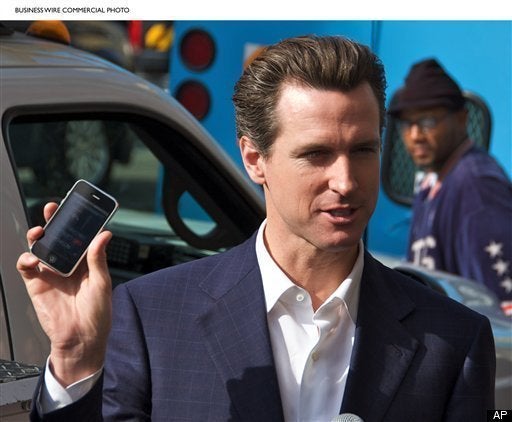
What happens when a city releases public data for anybody to use? The city becomes a better place to live.
Disabled people can more easily find nearest blue zones, which are parking spaces for the disabled. The most kid friendly neighborhoods can easily be found on a web page. Even tree hugging becomes more sophisticated, as residents can notify the city's maintenance department about suffering trees with one click on a computer.
Is this an utopia? No. This is happening in San Francisco, California, and all the services mentioned above are available on web or mobile applications. San Francisco is one of the few cities in the country that have released public data on a website for anybody to use.
The spreading, country-wide data liberation movement has created a whole new ecosystem, including web developers, non-profit organizations, journalists, and citizen activists. All the ecosystem's parts were present at the California Data Camp organized on Saturday in San Francisco. The historical camp, first of its kind ever, was a part of the city's initiative to encourage data sharing.
Inspired by the liberated data, developers are coding iPhone apps and pondering revenue models. Non-profits are creating services based on processing the data. Journalists want to break stories based on public data and do impressive visualizations highlighting problems.
We were witnessing something historical at the Data Camp. Craig Newmark, the founder of Craigslist, got the gist out of the phenomenon by saying: We are all part of something bigger. This is changing the ways we govern ourselves.
So far, the City of San Francisco has released for example street sweeping and local transportation schedules, and crime data. One of my favorite apps based on public data is Mom Maps. With the app, you can find kid friendly locations such as playgrounds, indoor play areas, and restaurants nearby your location in the city.
San Francisco is lucky to have a mayor like Gavin Newsom who has taken the data liberation movement seriously. Both stick and carrot are used to encourage data sharing. As a stick, he has given an executive directive to make all the city's non-confidential data public.
Internal competition is used as a carrot. On the city's online dataservice, you can see a leaderboard about data liberating in the city. Not surprisingly, the Department of Technology is leading.
The freedom of public data is still in its infancy, and a lot of things need to be figured out, as Jay Nath of DataSF put it. One of the open questions is an attribution system for public data. Maybe a Creative Commons-kind of an attribution could work?
One of the biggest challenges is the mindset in the city governance. Sharing can be scary for some people. On the other hand, sharing public data must be motivating for the city staff. It is more meaningful to maintain datasets that will make difference in people's lives, rather than maintaining the data only for city's internal use.